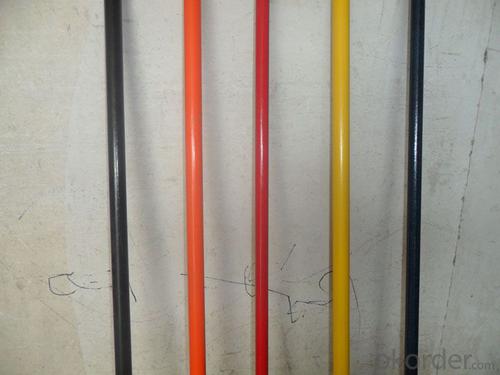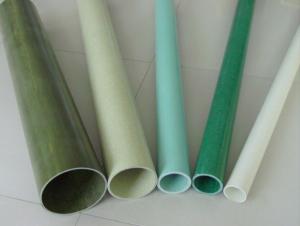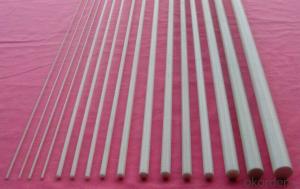FRP Pultrusion Profiles Fiberglass Tube with High Strength for Mop
- Loading Port:
- China Main Port
- Payment Terms:
- TT OR LC
- Min Order Qty:
- -
- Supply Capability:
- -
OKorder Service Pledge
OKorder Financial Service
You Might Also Like
Specifications of Fiberglass Tube with High Strength for Mop:
1.Consistent cross section
2.High corrosion resistance
3.Wide temperature range
4.UV resistant Inhibited
5.High strength
Applications of Fiberglass Tube with High Strength for Mop:
1) Outdoor activities: tent Pole, kite Rod, arrow shaft, ski pole, fishing rod, golf shaft, sail batten, hockey stick, kick board, skate boards, paddle shafts, bows and arrows, crossbows, golf shafts, slide guides, boat, kayak
2) Tool: umbrella shaft, umbrella rod, curtain rod, fence post, rail, handrail, frame for cases and bags, flag pole, oil sucker rods, bolts, stair, ladder, greenhouse structures, scaffold, portable work platforms, cooling tower, luggage rack, window/door frame, sign post, bridge structure, bus bar supports, tool handles, bike flags, flag poles, floor gratings, shoe soles, protective cases for laptops and iPhones
3) Toys: model cars/planes/helicopters, unmanned aerial vehicles, formula-1 race car
4) Vehicle: motor top sticks, u-shaped motor stator wedges, service truck booms, snowmobile track stiffeners, high-end automobile components, bicycle frames, glider, microcar, bodyshell, wind turbine blade.
5) Building: roofing laminate, flat roof, door surrounds, over-door canopies, window canopies and dormers, chimneys, coping systems, insulators, cable conductor, cable tray, antenna, transformer air duct spacer sticks, cable support trays, switch actuators.
- Q: Are FRP pultrusion profiles resistant to jet fuel?
- Yes, FRP pultrusion profiles are generally resistant to jet fuel.
- Q: What are the different types of FRP pultrusion profiles available?
- Some of the different types of FRP pultrusion profiles available include standard shapes such as I-beams, channels, angles, and tubes. Additionally, there are custom profiles that can be designed and manufactured based on specific project requirements.
- Q: Can FRP pultrusion profiles be used in the construction of agricultural structures?
- Yes, FRP pultrusion profiles can be used in the construction of agricultural structures. FRP pultrusion profiles are lightweight, durable, and resistant to corrosion, making them suitable for various agricultural applications such as greenhouse framing, livestock enclosures, and storage sheds. They offer excellent strength-to-weight ratio and can withstand harsh environmental conditions, making them a reliable choice for agricultural construction.
- Q: What is the tensile strength of FRP pultrusion profiles?
- The specific type and composition of materials used in FRP (Fiber Reinforced Polymer) pultrusion profiles can cause variations in their tensile strength. Generally, these profiles possess high tensile strength, often surpassing that of traditional construction materials like steel or aluminum. The range of tensile strength for FRP pultrusion profiles typically falls between 300 MPa (megapascals) and 1500 MPa or higher. However, it's worth noting that the tensile strength can be tailored and engineered to meet project requirements by adjusting the reinforcement materials, fiber orientation, resin matrix, and manufacturing process. Therefore, it is advisable to consult the manufacturer or supplier for accurate and specific information about the tensile strength of a particular FRP pultrusion profile.
- Q: Can FRP pultrusion profiles be used in telecommunications towers?
- Telecommunications towers can indeed utilize FRP (Fiber Reinforced Polymer) pultrusion profiles. These profiles possess several advantageous features that render them suitable for this particular application. Firstly, FRP profiles possess a lightweight yet robust nature, facilitating effortless installation and reducing the overall structural weight of telecommunications towers. This characteristic is crucial as it aids in minimizing the burden imposed on the tower structure. Secondly, FRP pultrusion profiles exhibit exceptional resistance to corrosion, making them ideally suited for outdoor applications such as telecommunications towers that are constantly exposed to diverse environmental conditions. Unlike conventional materials like steel or wood, FRP profiles do not succumb to rust, rot, or deterioration when subjected to moisture, UV radiation, or chemicals typically encountered in outdoor environments. Additionally, FRP pultrusion profiles offer excellent electrical insulation properties, a critical aspect for telecommunications towers. These profiles are non-conductive, thereby reducing the likelihood of electrical interference or short circuits that might disrupt the tower's communication systems. Moreover, FRP pultrusion profiles can be produced in various shapes and sizes, thereby enabling customization and meeting the specific design requirements of telecommunications towers. This versatility facilitates seamless integration and compatibility with other components of the tower. Overall, the combination of lightweight composition, high strength, corrosion resistance, electrical insulation, and customization options renders FRP pultrusion profiles an advantageous and viable selection for utilization in telecommunications towers.
- Q: Are FRP pultrusion profiles resistant to high-pressure water jets?
- Yes, FRP (Fiber Reinforced Polymer) pultrusion profiles are generally resistant to high-pressure water jets. The inherent properties of FRP, such as its high strength-to-weight ratio, corrosion resistance, and durability, make it a suitable material for applications involving exposure to water and other harsh environments. The manufacturing process of pultrusion ensures that the fibers are thoroughly impregnated with resin, resulting in a homogeneous and highly dense composite material. This density provides FRP pultrusion profiles with a high resistance to water penetration, preventing the material from being damaged or compromised by high-pressure water jets. Furthermore, FRP pultrusion profiles are known for their excellent chemical resistance, which includes resistance to water. This characteristic ensures that the profiles will not degrade or deteriorate when exposed to high-pressure water jets over extended periods. It is worth noting that the specific resistance of FRP pultrusion profiles to high-pressure water jets may vary based on the specific resin and fiber combination used in their manufacturing. Therefore, it is recommended to consult the manufacturer or supplier for detailed information regarding the resistance of specific FRP pultrusion profiles to high-pressure water jets in a given application.
- Q: Can FRP pultrusion profiles be used in the water treatment industry?
- Yes, FRP pultrusion profiles can be used in the water treatment industry. FRP (Fiber Reinforced Plastic) offers excellent corrosion resistance and durability, making it suitable for various applications in water treatment plants. FRP pultrusion profiles can be used in the construction of water tanks, pipes, pumps, and other equipment, providing a lightweight and high-strength alternative to traditional materials like steel. Additionally, FRP profiles are non-conductive and have low thermal conductivity, making them ideal for applications involving chemicals and extreme temperature variations commonly found in water treatment processes.
- Q: Are FRP pultrusion profiles suitable for the manufacturing of boat hulls?
- Yes, FRP (Fiber Reinforced Polymer) pultrusion profiles are suitable for the manufacturing of boat hulls. Their high strength-to-weight ratio, corrosion resistance, and durability make them an ideal choice for boat construction. Additionally, pultruded profiles can be customized to meet specific design requirements and offer excellent dimensional stability, making them a reliable option for boat hull manufacturing.
- Q: Can FRP pultrusion profiles be used in wastewater or sewage treatment plants?
- FRP pultrusion profiles are applicable for use in wastewater or sewage treatment plants. These materials possess exceptional resistance against corrosion, making them an ideal option for environments that frequently encounter chemicals, moisture, and harsh conditions, such as wastewater treatment plants. Compared to conventional materials like steel or concrete, FRP pultrusion profiles offer numerous advantages. They are lightweight, yet incredibly sturdy and long-lasting, facilitating easy installation while maintaining resistance against damage or degradation over time. Additionally, FRP profiles possess non-conductive properties and display good thermal insulation, which can prove advantageous in specific applications within wastewater treatment plants. Moreover, FRP materials exhibit immunity to corrosion and rust, even when exposed to aggressive chemicals and gases commonly present in wastewater or sewage treatment plants. This corrosion resistance significantly prolongs the lifespan of FRP pultrusion profiles, thereby reducing the necessity for frequent maintenance and replacement. To summarize, owing to their corrosion resistance, durability, and other favorable properties, FRP pultrusion profiles are an appropriate choice for a variety of applications in wastewater or sewage treatment plants, including walkways, platforms, handrails, grating, and structural supports.
- Q: Are FRP pultrusion profiles resistant to graffiti?
- Yes, FRP pultrusion profiles are generally resistant to graffiti. The smooth surface of FRP profiles makes it difficult for graffiti to adhere, and any graffiti that is applied can be easily removed without causing damage to the profile.
Send your message to us
FRP Pultrusion Profiles Fiberglass Tube with High Strength for Mop
- Loading Port:
- China Main Port
- Payment Terms:
- TT OR LC
- Min Order Qty:
- -
- Supply Capability:
- -
OKorder Service Pledge
OKorder Financial Service
Similar products
Hot products
Hot Searches
Related keywords




























